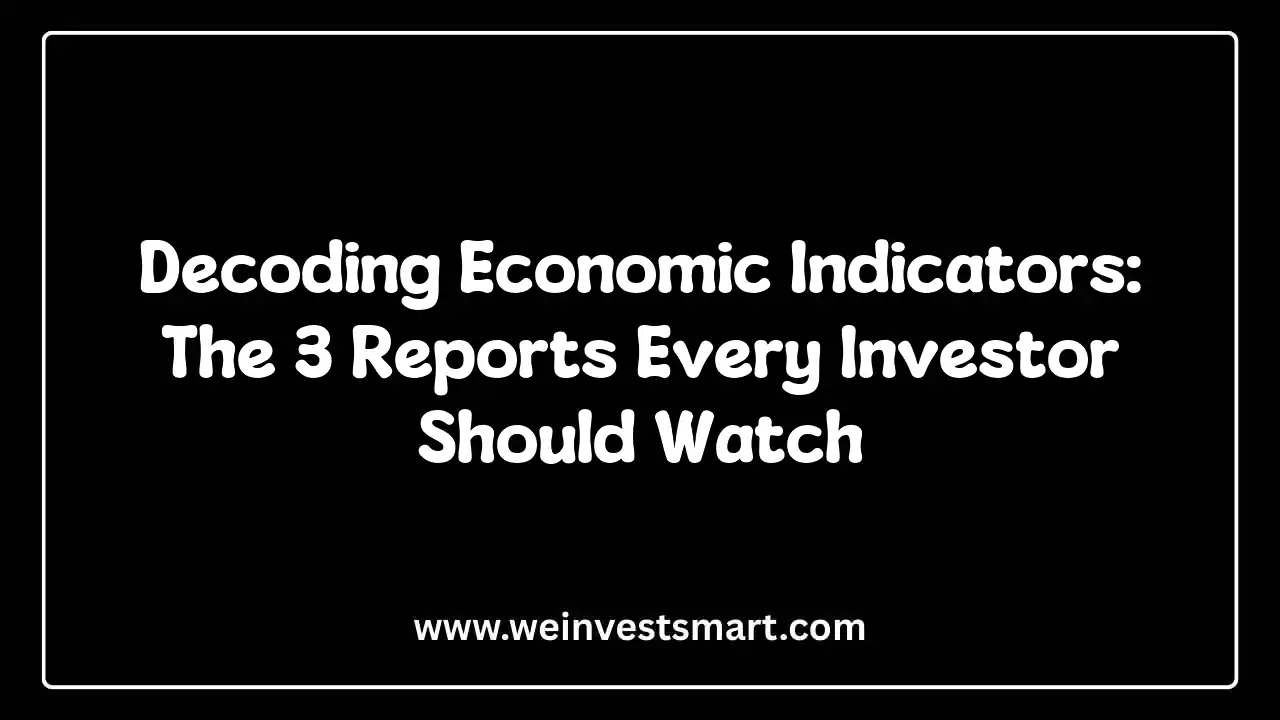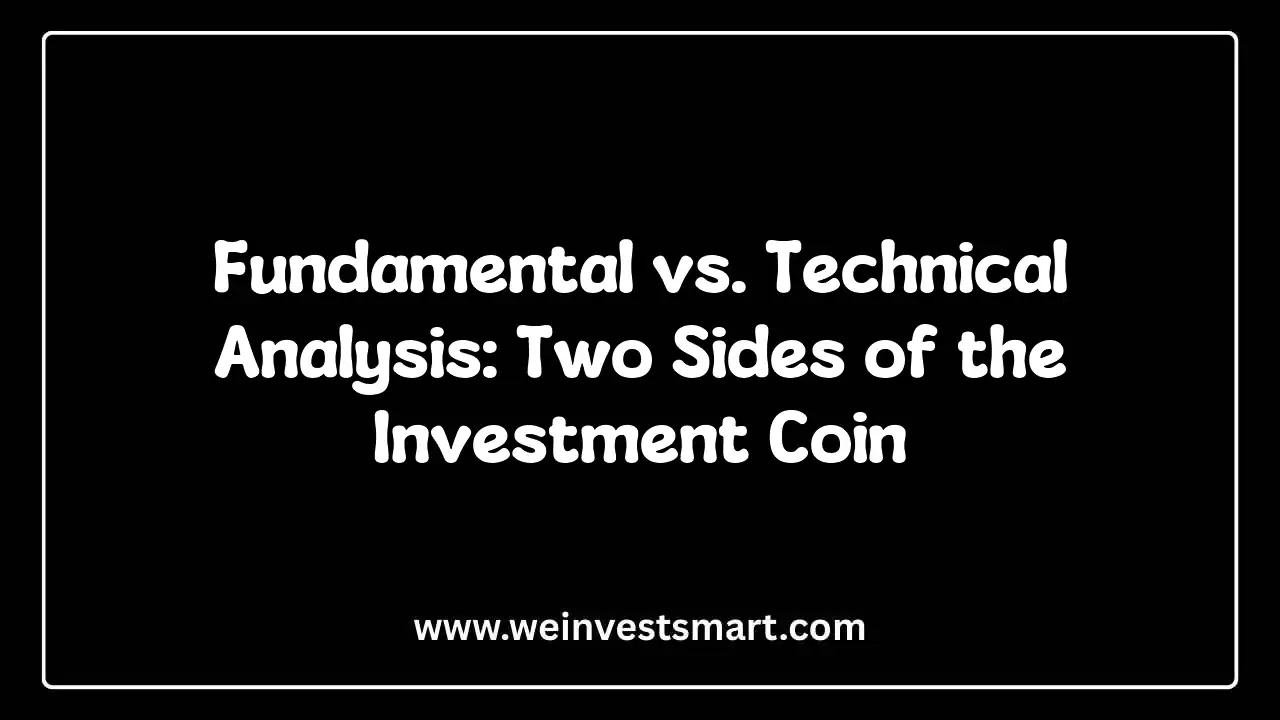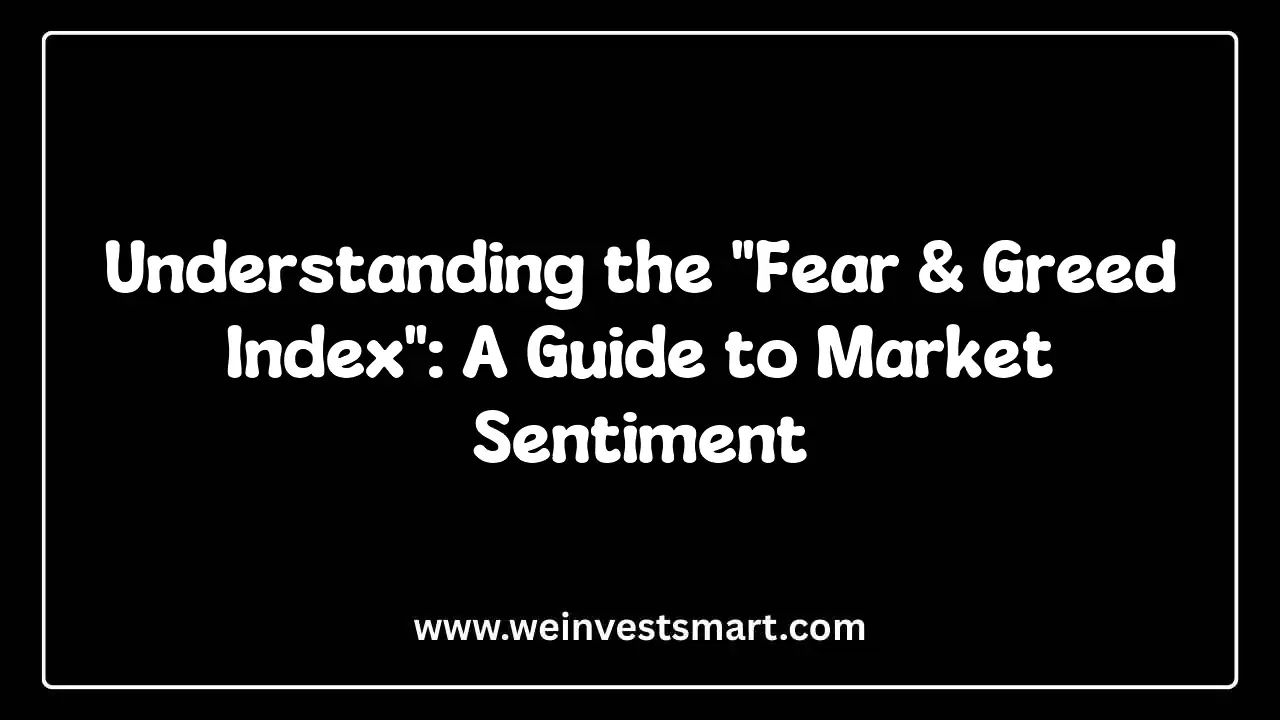· WeInvestSmart Team · market-analysis · 11 min read
How the Federal Reserve and Interest Rates Affect the Stock Market
An essential guide to understanding the immense power the Federal Reserve holds over your investments. We demystify interest rates and reveal the playbook for investing in any monetary environment.
Most investors believe their success depends on picking winning companies. They spend countless hours analyzing balance sheets, product lines, and management teams. But here’s the uncomfortable truth: a small group of economists in a single building in Washington, D.C. has more influence over your portfolio’s performance than almost any CEO. Going straight to the point, the Federal Reserve, through its control of interest rates, wields a power so profound it can create or destroy trillions of dollars in market value with just a few words. Ignoring this is like sailing a ship while ignoring the tide.
We’ve all seen the headlines: “Fed Raises Rates, Market Tumbles” or “Fed Hints at Cuts, Stocks Soar.” To many, this relationship is a black box. The actions of a quasi-governmental agency feel distant and impossibly complex, a mystery reserved for Wall Street analysts. But what if we told you the core principles are actually simple, intuitive, and absolutely essential for your financial survival?
Here’s where things get interesting. Understanding how the Fed operates isn’t about becoming an economist. It’s about recognizing the fundamental physics of the financial universe. And this is just a very long way of saying that interest rates are the economic equivalent of gravity. When they are low, assets can float to incredible heights. When they rise, they pull everything back down to earth. This is your guide to understanding that gravity.
The Economy’s Thermostat: What Is the Federal Reserve, Anyway?
Before we can grasp the “how,” we need to understand the “who” and “why.” Most people don’t know this, but the Federal Reserve (or “the Fed”) is the central bank of the United States, and it operates with a dual mandate from Congress: to achieve maximum employment and stable prices. In other words, its job is to keep the economy running hot enough that everyone who wants a job can get one, but not so hot that it overheats into runaway inflation.
Think of the Fed as the economy’s thermostat. If the economy is getting too cold—slowing down, with rising unemployment—the Fed’s job is to turn up the heat by making money cheaper and easier to access. If the economy is getting too hot—with inflation soaring and prices for everyday goods spiraling out of control—it must turn on the air conditioning, making money more expensive to cool things down.
Its primary tool for controlling this thermostat is the Federal Funds Rate. Going straight to the point, this is the interest rate banks charge each other for overnight loans. While you’ll never pay this rate directly, it’s the foundational rate that dictates the cost of money across the entire financial system. It influences everything from your mortgage and car loan rates to your credit card’s APR and, most importantly for our discussion, the stock market.
You may also be interested in: Decoding Economic Indicators: The 3 Reports Every Investor Should Watch
The First Domino: How Interest Rates Squeeze Corporate Profits
The most direct way the Fed’s actions hit the stock market is by impacting the very thing that gives stocks their value: corporate earnings. A stock, at its core, represents a share in the future profits of a business. Anything that threatens those future profits will inevitably threaten the stock’s price. When the Fed raises interest rates, it sets off a chain reaction that directly squeezes those profits from two different directions.
First, it raises the cost of borrowing for businesses. Companies run on debt. They borrow money to build new factories, invest in research and development, hire new employees, and even buy back their own stock. When interest rates are low, this debt is cheap, fueling expansion and boosting earnings. But when the Fed hikes rates, the cost of servicing existing debt goes up, and taking on new debt becomes much more expensive. This forces companies to pull back on growth initiatives, and more of their revenue goes toward paying interest instead of flowing to the bottom line as profit.
Second, higher rates hit consumer spending. Just as businesses face higher borrowing costs, so do you. Mortgages, auto loans, and credit card balances all become more expensive. This leaves less disposable income in peoples’ pockets. When consumers have less money to spend, they buy fewer cars, iPhones, and vacations. This reduction in demand directly hits the revenues of countless companies, leading to—you guessed it—lower profits. It’s a one-two punch of higher costs and lower sales, a brutal combination for stock valuations.
You may also be interested in: A Beginner’s Guide to Reading Candlestick Charts
The Great Alternative: Why Stocks and Bonds Are in a Constant Battle
Here’s where things get really interesting, because the impact of interest rates goes far beyond simple profit and loss statements. It fundamentally alters the decision-making process for every investor on the planet by changing the competitive landscape for your money. For the decade following the 2008 financial crisis, investors lived in a world nicknamed “TINA,” which stands for There Is No Alternative.
In that era of near-zero interest rates, putting your money in a “safe” asset like a government bond or a savings account was a losing proposition. With inflation at 2% and a bond paying you 0.5%, you were actively losing purchasing power. To get any meaningful return, you were practically forced into the stock market, pushing valuations to historic highs. You had to accept the risk of stocks because there was no alternative.
But when the Fed raises interest rates, TINA dies. Suddenly, a new option appears: TARA, or There Are Real Alternatives. If a U.S. Treasury bond—backed by the full faith and credit of the government and considered virtually risk-free—is paying a 5% yield, the calculation for an investor changes completely. Why would you risk your capital in the volatile stock market for a potential 7% or 8% return when you can get a guaranteed 5% with almost zero risk?
This sounds like a trade-off, but it’s actually a fundamental re-pricing of risk. The difference between the expected return on stocks and the risk-free rate from bonds is called the equity risk premium. It’s the extra compensation investors demand for taking on the additional risk of owning stocks. When the risk-free rate goes up, this premium gets squeezed unless stock prices come down. In other words, rising bond yields put direct, gravitational pressure on stock prices to fall in order to remain attractive.
You may also be interested in: What is a “Recession”? A Simple Explanation of the Economic Term Everyone is Using
The Power of Words: Fed-Speak and Market Psychology
Beyond the hard math of profits and yields, the Fed exerts a powerful psychological influence on the market. Wall Street is a forward-looking machine, constantly trying to predict the future. Because of this, the Fed’s language can be just as impactful as its actions. Investors and algorithms hang on every word of the Fed Chair’s press conferences, dissecting statements for clues about future policy.
This has created a whole lexicon of “Fed-speak.”
- Hawkish: A hawkish stance means the Fed is aggressive about fighting inflation and is likely to raise interest rates or keep them high. The mere hint of a hawkish tone can send markets tumbling in anticipation of tighter financial conditions.
- Dovish: A dovish stance is the opposite. It signals the Fed is more concerned about weak employment or a slowing economy and is likely to lower interest rates. Dovish commentary is often music to Wall Street’s ears, sparking rallies.
The funny thing is that the market often reacts more to the expectation of a rate change than to the change itself. By the time the Fed officially announces a widely anticipated rate hike, it’s often already “priced in” to the market. This is why a “buy the rumor, sell the news” mentality is so prevalent. The game is not about reacting to what the Fed does; it’s about positioning for what you think the Fed is going to do next.
You may also be interested in: Fundamental vs. Technical Analysis: Two Sides of the Investment Coin
The Investor’s Playbook: How to Navigate the Rate Cycle
So, what do we do? If a small committee can change the entire investing landscape, how can an individual investor possibly succeed? And here is where things get interesting. You succeed by not playing their game. You cannot predict the Fed’s next move with perfect accuracy, and trying to do so is a recipe for disaster. Instead, you build a robust strategy that can withstand different interest rate environments.
Investing in a Rising-Rate Environment:
- Focus on Quality and Low Debt: Companies that don’t rely heavily on borrowing are insulated from rising interest costs. Look for businesses with strong balance sheets, consistent cash flow, and mountains of cash.
- Prioritize Pricing Power: Businesses that sell essential products or have powerful brands (think Coca-Cola or Procter & Gamble) can pass inflationary costs on to consumers, protecting their profit margins.
- Value Over Growth: Value stocks, which tend to be more mature companies trading at lower multiples of their current earnings, often outperform in rising-rate environments. High-flying growth stocks, whose valuations are based on distant future profits, get hit harder because those future earnings are worth less today when discounted at a higher rate.
Investing in a Falling-Rate Environment:
- Growth Stocks Take Center Stage: Technology and other growth-oriented sectors thrive when money is cheap. Lower rates make it easier to fund innovation and expansion, and their future earnings become more valuable.
- Consider “Long-Duration” Assets: This is just a fancy way of saying assets that are sensitive to interest rates, like bonds and dividend-paying utility stocks. As rates fall, their existing higher yields become more attractive, pushing their prices up.
But even though these sector-specific tendencies exist, we must always remember the timeless principles. The most effective strategy across all environments is diversification and a long-term perspective.
You may also be interested in: Understanding the “Fear & Greed Index”: A Guide to Market Sentiment
The Bottom Line: Don’t Fear the Fed, Understand It
The relationship between the Federal Reserve and the stock market seems complex, but it all boils down to a few core truths. The Fed controls the cost of money. The cost of money affects corporate profits. And the cost of money determines how attractive other, safer investments are compared to stocks. And this is just a very long way of saying that the Fed’s actions ripple through every corner of the financial system.
You don’t need to predict every ripple. But by understanding the source of the tide, you can build a portfolio that is a sturdy ship, not a flimsy raft. The goal is not to be a perfect economist but a prepared investor. By recognizing the immense gravitational pull of interest rates, you can stop being surprised by market downturns and start seeing them as a natural and even predictable part of the economic cycle. You get the gist: master this concept, and you’ll be miles ahead of the investor who is still just chasing headlines.
This article is for educational purposes only and should not be considered personalized financial advice. Consider consulting with a financial advisor for guidance specific to your situation.
The Federal Reserve and Investing FAQ
What is the Federal Reserve (the Fed)?
The Federal Reserve is the central bank of the United States. It has a dual mandate: to promote maximum employment and to maintain stable prices (which means controlling inflation). It’s the primary institution responsible for managing the country’s monetary policy.
How do Federal Reserve interest rates affect the stock market?
Higher interest rates make borrowing more expensive for companies, which can reduce their profits and slow down growth. They also make safer investments like bonds more attractive, pulling money out of the stock market. Conversely, lower interest rates stimulate the economy and tend to push stock prices higher.
What happens to stocks when interest rates go up?
When interest rates rise, the stock market often comes under pressure. Companies’ borrowing costs increase, potentially hurting earnings. Furthermore, bonds and savings accounts offer better returns, creating a safer alternative to stocks and causing some investors to sell their equities.
What happens to stocks when interest rates go down?
Lowering interest rates generally acts as a stimulant for the stock market. It becomes cheaper for businesses to borrow and invest in growth, and consumers have more money to spend. With lower returns on bonds, stocks become a more attractive investment, driving prices up.
What is the Fed Funds Rate?
The Federal Funds Rate is the target interest rate set by the Fed that banks charge each other for overnight loans to meet reserve requirements. While you don’t pay this rate directly, it’s the foundational rate that influences all other borrowing costs in the economy, from mortgages to credit cards.



